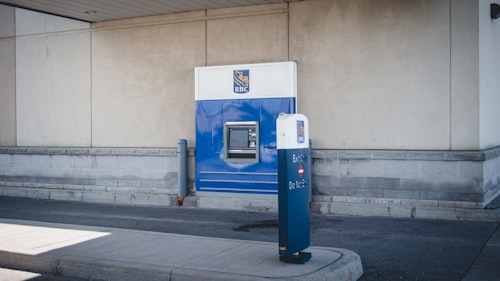Introduction
As an expert in banking technology, I'm here to provide you with a comprehensive guide on email check deposits. In today's digital age, traditional banking methods are being revolutionized by innovative solutions. Email check deposits offer a convenient way to deposit checks without visiting a physical bank branch. In this guide, we will explore the process of email check deposits, their benefits, potential risks, and answer common questions to help you make informed financial decisions.
Understanding Email Check Deposits
Email check deposits involve the electronic transmission of check images or check data through email for the purpose of depositing them into a bank account. This method eliminates the need for physical check transportation and enables users to deposit checks from the comfort of their homes or offices.
Benefits of Email Check Deposits
Convenience and Time-Saving
Email check deposits provide unparalleled convenience. You can deposit checks anytime, anywhere, as long as you have access to an internet-connected device and email. This eliminates the need for visiting a bank branch, saving you time and effort.
Faster Access to Funds
With email check deposits, funds are typically available in your account faster compared to traditional check deposits. Banks often process email check deposits quickly, allowing you to access funds within a shorter time frame.
Secure and Efficient
Email check deposits are designed to be secure and efficient. Banks employ encryption and other security measures to protect your sensitive information during transmission. Additionally, email check deposits reduce the risk of check loss or theft that can occur with physical checks.
Environmentally Friendly
By opting for email check deposits, you contribute to a greener environment by reducing paper consumption associated with physical checks. This eco-friendly approach aligns with sustainable practices and promotes a digital banking ecosystem.
Risks and Considerations
While email check deposits offer numerous benefits, it's important to be aware of potential risks and considerations:
Security Concerns
Emails can be intercepted or accessed by unauthorized individuals, posing a security risk. However, banks employ encryption and secure protocols to minimize these risks. It's crucial to use a secure internet connection and follow best practices for protecting your email account.
Scams and Fraudulent Checks
Scammers may attempt to exploit email check deposits by sending fraudulent or counterfeit checks. It's essential to verify the authenticity of the check and ensure it comes from a trusted source. Be cautious of unsolicited check emails and never deposit a check from an unknown or suspicious sender.
Deposit Limits and Policies
Banks may impose deposit limits or have specific policies regarding email check deposits. These limits can vary based on factors such as account type, customer history, and the bank's risk management practices. Familiarize yourself with your bank's policies to avoid any surprises.
How to Deposit a Check via Email
The process of depositing a check via email may vary depending on the bank and the specific procedures they have in place. However, the general steps typically involve the following:
Capture Check Images
Using your smartphone or a scanner, capture clear images of the front and back of the check. Ensure that all details, including the check amount and endorsements, are clearly visible.
Compose an Email
Create a new email and attach the check images to the email as separate attachments. Include relevant information, such as your account number and any additional instructions specified by your bank.
Send the Email
Once you have reviewed the email for accuracy, send it to the designated email address provided by your bank for check deposits. Keep a copy of the email for your records.
Confirm Deposit
After sending the email, your bank will process the deposit. They may send you a confirmation email or provide updates on the status of the deposit. It's advisable to monitor your account and contact the bank if you have any concerns.
Frequently Asked Questions (FAQs)
Is email check deposit available at all banks?
Not all banks offer email check deposit services. It's important to check with your bank to determine if they provide this option and understand their specific procedures and requirements.
Can I deposit any type of check via email?
Banks typically allow you to deposit personal checks, business checks, and money orders via email. However, restrictions may apply to certain types of checks, such as post-dated checks or foreign checks. Refer to your bank's guidelines for more information.
Are there any fees associated with email check deposits?
Banks may charge fees for email check deposits, although some may offer this service free of charge. It's advisable to review your bank's fee schedule or contact customer support to understand any applicable fees.
What should I do with the physical check after emailing it for deposit?
After emailing the check for deposit, it's generally recommended to retain the physical check for a certain period as a precautionary measure. Verify with your bank if they have any specific recommendations regarding the disposal of physical checks.
Conclusion
Email check deposits provide a convenient and secure method for depositing checks remotely. With the ability to save time, access funds faster, and contribute to a greener environment, email check deposits offer a modern approach to banking. However, it's important to be aware of security concerns, verify check authenticity, and understand your bank's policies. By following best practices and staying informed, you can leverage the benefits of email check deposits while protecting your financial interests.



